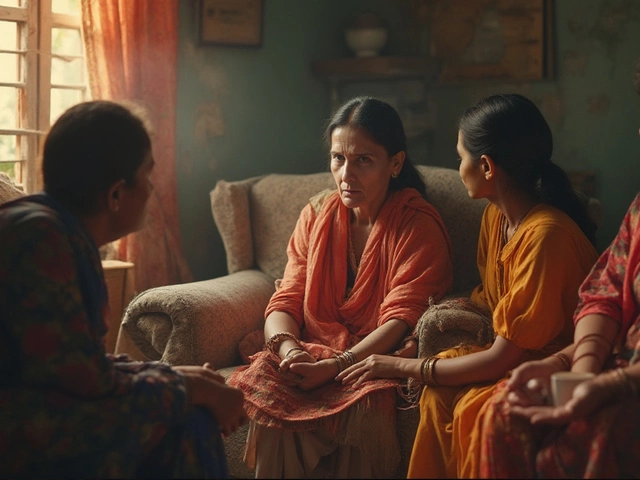Is your health worth millions? For some, the answer isn’t just yes—it’s a reality. The price tags on certain life-saving surgeries can hit numbers that’d make even Bollywood stars blink twice. People often talk about the sky-high cost of healthcare, but when it comes to the world’s most expensive surgery, most folks aren’t even in the same stratosphere. Let’s pull back the curtain on what drives surgical fees into the clouds—and see which procedures top the money charts.
When Surgery Costs More Than a House: What Drives the Price?
Expensive surgeries don’t just come from a single bill with lots of zeros. They’re the grand finale of thousands of smaller costs all adding up. Think about this: world-class surgeons trained for decades, rare donor organs, operating rooms packed with a dozen specialists, and high-tech machines that might cost crores. Add in post-op care, weeks in the ICU, and life-long medications. It all adds up fast.
Take organ transplants, for example. A heart transplant in the US often crosses the $1.5 million mark. In India, thanks to subsidies, it’s cheaper, but costs—especially with complications—can touch ₹30-40 lakh or more. What’s behind those costs? You’ve got:
- Specialized surgical teams (more than 20 people sometimes!)
- The transplant organ—flown in under strict timelines
- Massive diagnostic testing
- Post-surgical critical care (ICU for days or weeks)
- Lifelong drugs to prevent organ rejection
Internationally, costs can soar if patients need pre-surgery support, like being kept alive on heart-lung machines for days. Medical inflation—roughly 8-10% a year in India—doesn’t help either. Then there’s insurance. In places like the US, even with good insurance, patients can be left with bill shocks running into lakhs because some things aren’t covered.
For comparison, here’s a look at some typical numbers:
| Surgery Type | Average Cost (INR) | Notes |
|---|---|---|
| Heart Transplant | 30-50 lakh | Includes 3-4 weeks hospital stay & postoperative care |
| Liver Transplant | 20-35 lakh | Price spikes if there are complications |
| Bone Marrow Transplant | 20-25 lakh | Cheaper in India than globally |
| Lung Transplant | 25-30 lakh | Multiple organs? Costs multiply |
| Separation of Conjoined Twins | 40-65 lakh | Months of follow-up care |
These massive figures make headlines—but there are some even pricier surprises coming up.
The King of High-Cost Surgeries: Heart Transplants and Beyond
So, which surgery wears the crown for being the world’s most expensive? For decades, the answer has often been the heart and combined organ transplants—like heart-lung or heart-liver transplants. But there’s more to the story.
In 2024, a US hospital billed a whopping $2.5 million (over ₹20 crore) for a multi-organ transplant involving the heart, lungs, and liver. What sent costs through the roof? The patient needed artificial organs to stay alive for weeks, had multiple surgeries for complications, and spent three months in the ICU. Each machine’s daily rent rivaled luxury hotels.
Separating conjoined twins can also claim the “most expensive” tag. In 2019, doctors in New Delhi performed a 50-hour operation to separate two Bahraini twins joined at the head. The bill, including seven months in hospital and extensive rehab, landed close to ₹90 lakh. These cases are so rare that actual costs differ wildly. Hospitals sometimes absorb part of the costs for charity or publicity.
Sometimes, it’s not a single surgery, but years of repeated procedures that pile up the fees. Hemophiliac patients sometimes require multiple joint surgeries, and lifelong replacement of artificial joints. Some cancer treatments—like bone marrow transplants plus experimental immune therapies—can match or even beat transplant bills.
Let’s not forget American healthcare, famous for eye-watering price tags. In 2022, the average cost of a heart transplant in the US reached $1.7 million, not counting post-op medications, follow-up visits, and re-hospitalizations, which can double or triple the lifetime costs.
But here’s something most people don’t know: sometimes, the surgery itself isn’t the most expensive part. Seven to ten years of post-transplant medicines can double the upfront costs. Missing these medicines? That could risk the transplanted organ and send the patient back to square one.

Beyond the Price Tag: Stories That Define Value
It’s easy to get lost in the numbers, but behind these mind-boggling prices are human stories. Take the story of Reena, a 35-year-old from Pune who needed a liver transplant after sudden organ failure. Her family crowdfunded over ₹40 lakh overnight, with donations pouring in from strangers, school friends, even the local auto driver. The hospital agreed to operate before payment was complete, betting on people power—and Reena is now back to work.
Or consider a Mumbai surgeon who’s performed over 100 heart transplants and says he remembers every face. Because most can’t afford these surgeries out of pocket, India has a thriving network of NGOs, crowd-funding platforms, and hospital charity funds. In 2023, KEM Hospital completed its 400th kidney transplant—almost a quarter funded by donors.
On the flip side, US insurance disputes have left families bankrupt after “coverage gaps.” In a famous 2020 case, a Missouri family sold their home after their daughter’s bone marrow transplant ran up surprise bills of $750,000 beyond what insurance would pay. The moral? Always ask for an itemized bill and get pre-approval for any major procedure.
Anyone facing high-cost surgeries should keep a few tips in mind:
- Explore government schemes (like Ayushman Bharat) and local state insurance plans.
- Ask about hospital “charity quotas”—many private hospitals have them for rare or complex surgeries.
- Get a second opinion on necessity and cost. Sometimes cheaper, equally effective options exist.
- Don’t be afraid to negotiate. Hospitals will sometimes lower costs for patients that ask, especially if media or charity support is involved.
- Plan for the hidden costs: ongoing drugs, travel, and loss of income for caregivers.
Why Do Costs Vary So Much by Country?
Why is it cheaper to get a liver transplant in Chennai than in Chicago? Two big reasons: medical tourism and government regulation. India, Thailand, and Turkey have become hot spots for complex surgeries, partly due to lower labor costs and partly because hospitals don’t tack on giant administration fees. Yet, you still get world-class surgeons—many trained in the West.
A liver transplant at a top Chennai hospital averages ₹22 lakh—compared to ₹2.3 crore in London. But this doesn’t mean you should pack your bags without research. Differences in post-op care, infection rates, and quality of implants matter massively. Some countries offer better survival rates for certain high-end surgeries, especially rare ones.
Government-run hospitals in India, like AIIMS in Delhi, sometimes offer transplants for as little as ₹5 lakh for poor patients. But waiting lists are long, and beds are snapped up fast. In private hospitals, you can book surgery within days if you can pay the premium.
Insurance—public, private, or charity—plays a huge role. In India, middle-class families often combine private insurance (covering ₹2-5 lakh), out-of-pocket spending, and sometimes crowd-funding to bridge the gap. In Europe, “universal health coverage” means citizens rarely see giant bills, but taxes run high as a result.
When it comes to rare surgeries—like the world’s costliest, full-face transplantation (done only a handful of times globally and costing over $1 million)—some countries simply don’t have the expertise.

Can Anyone Afford the "Most Expensive Surgery"?
If you’ve made it this far, you’re probably wondering who—outside of billionaires or heads of state—actually pays these bills. The answer isn’t just the super-rich. Many times, it’s the result of combined family savings, community support, and creative fundraising.
Medical crowdfunding in India has changed the game. Websites like Ketto and Milaap have raised crores for kids needing complex heart surgeries, cancer care, even rare gene therapies. For a few, health insurance from employers covers the big-ticket stuff, though loopholes and “non-disclosed pre-existing disease” clauses can be nasty surprises.
A tough truth: not everyone who needs these surgeries gets them. The World Health Organization says only 10% of patients worldwide who need an organ transplant actually receive one. Shortage of organs is a major issue—just as much as cost.
If you think your family is safe thanks to genetic luck, remember: accidents, sudden illnesses, or rare cancers can strike anyone. Having health insurance, understanding charity options, and being aware of medical rights can be life-savers—not just wallet-savers.
So, what is the most expensive surgery? It’s usually those where you’re replacing or fixing an entire organ or more—heart, liver, lungs, or bone marrow—and every minute counts. But, “expensive” is relative. For one family, ₹15 lakh can be life-changing. For some, it’s a shot at a second life. And for billions, the question remains not just how much it costs—but whether their loved ones will ever get the chance.





